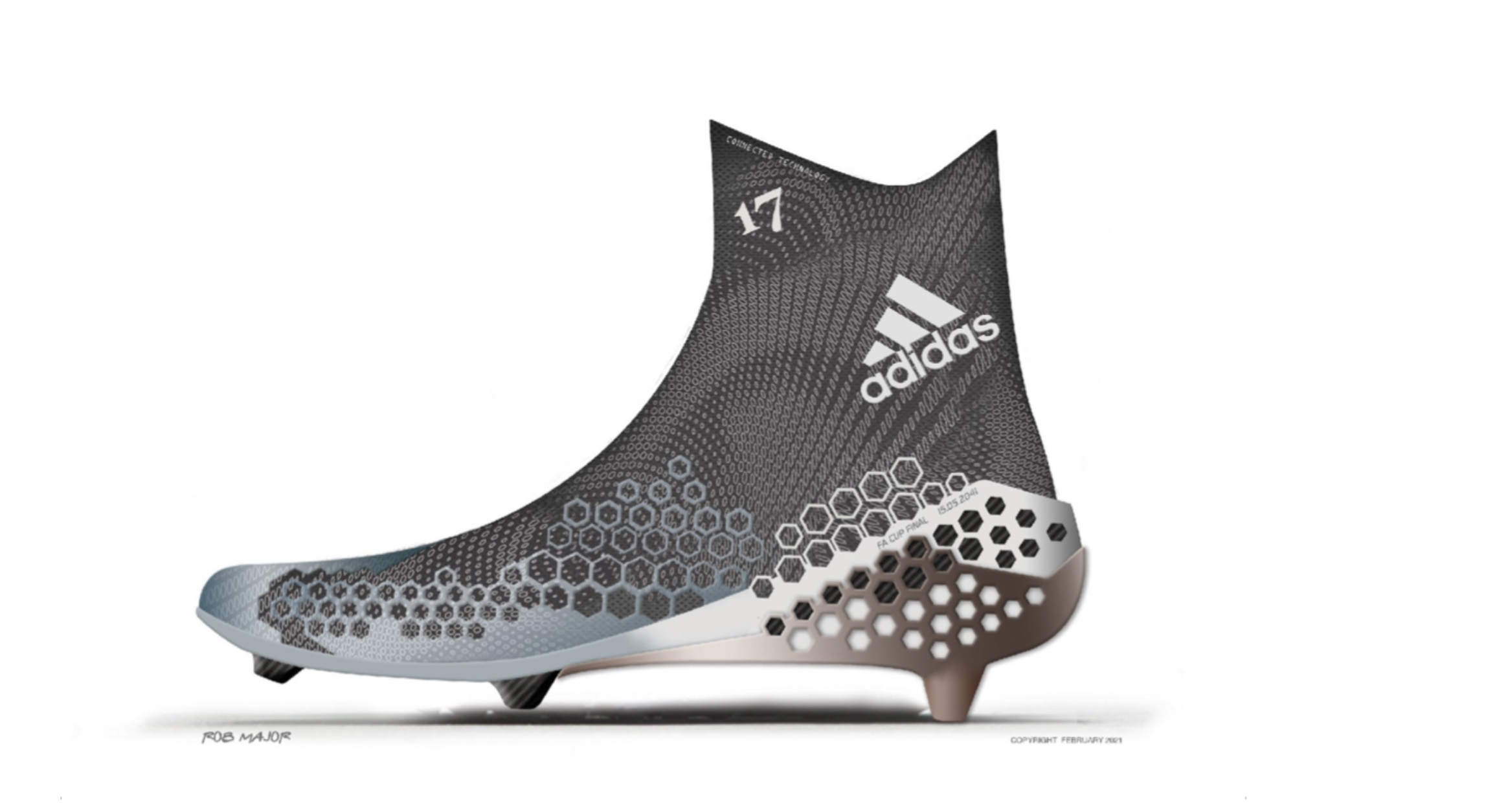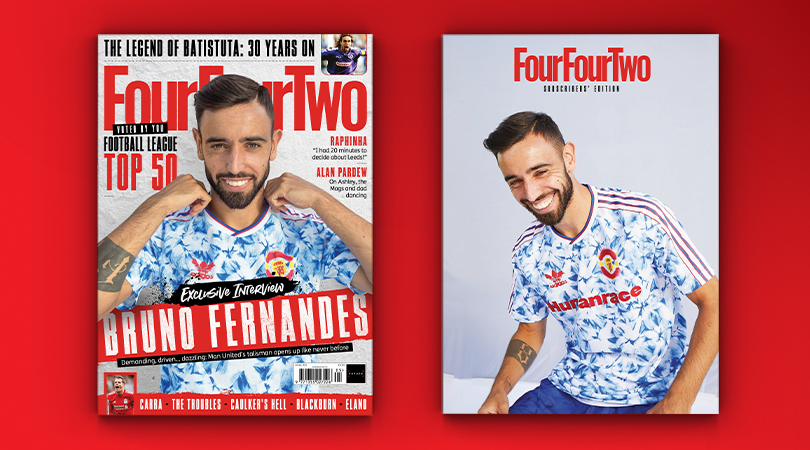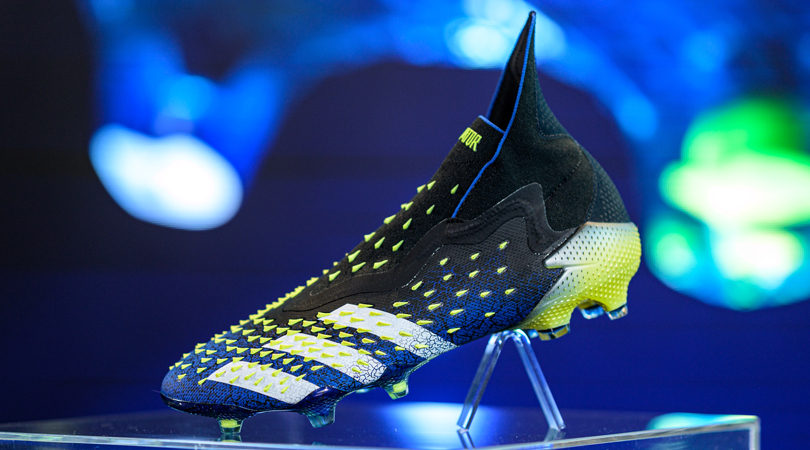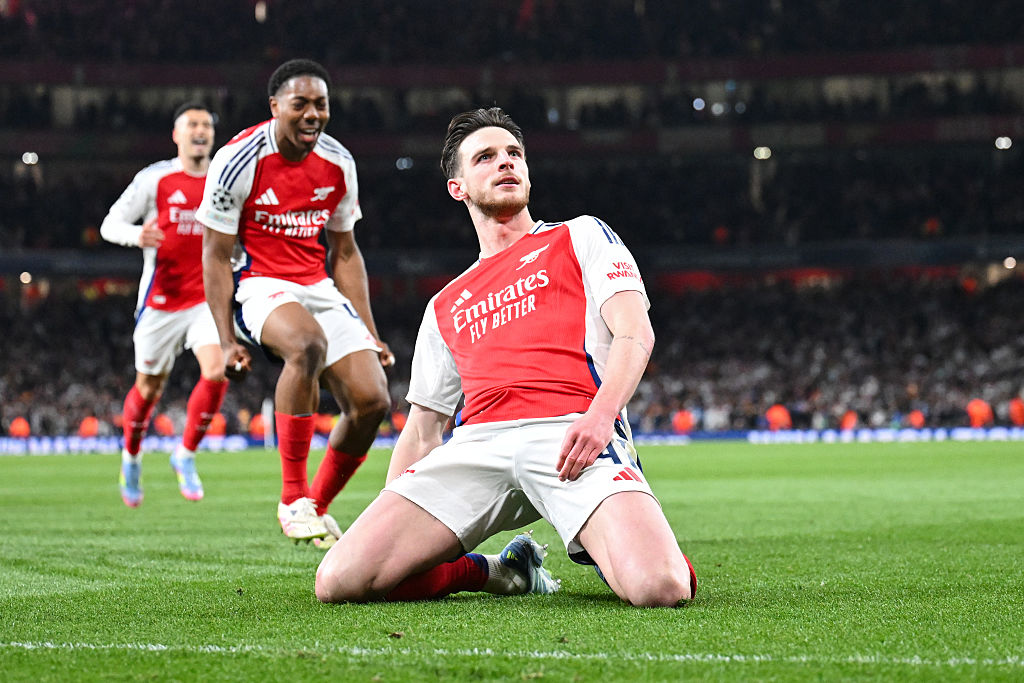From preventing injury to flagging offsides: What will football boots look like in 20 years’ time?
Football boots could be made in labs, get recycled between matches and let fans know who is on a yellow card. James Robinson went to find out more about the future...

Football boots have come a long way since Alan Ball debuted a gleaming pair of white Hummels while captaining Everton to a 2-1 win over Chelsea in the 1970 Charity Shield.
That momentous occasion was ironically something of a white lie for the forward-thinking German company; the 1966 World Cup-winning midfielder was actually wearing a pair of adidas boots hastily whitewashed and camouflaged with Hummel chevrons prior to the game.
But while Ball’s choice of footwear cast him in the role extravagant outlier at the turn of the ‘70s, by modern standards he would be shunted to the shadows with the rest of the shy and retiring types.

Three of the world’s best forwards in Cristiano Ronaldo, Erling Haaland and Kylian Mbappe all currently wear a Nike Mercurial boot coloured bright crimson or pink, depending on whether you speak PR jargon; Lionel Messi’s adidas Nemeziz combine royal blue with a shock of solar yellow; even Paul Pogba’s relatively muted adidas Predator Freaks are covered in porcupine-esque ‘Demoskin 2.0 spines’.
Football boots are no longer sartorial statements; they are technological paraphernalia. You lace up a pair of boots just as you strap on your Apple Watch or connect your Bose wireless headphones before you leave the house. Long gone are the days of Sir Alex Ferguson banning Man United’s youngster from wearing anything colourful on their feet.
So what does the future hold for the once humble football boot? Take 17-year-old Shola Shoretire, for example, who recently made his United debut wearing a pair of adidas X 19.1 boots. What state-of-the-art innovations will he be gliding around the pitch wearing in 2041, if he follows in Arjen Robben, Franck Ribery and Ricardo Quaresma’s footsteps and plays through to the age of 37?
There’s room for improvement. That’s according to Simon Heap of Design for Sport, an innovative sports product design consultancy specialising in creating and improving new and existing products in sport. “Football boots have been pretty static design wise for the last few years. The last real innovation was the adidas Predator, which was based on an original design by Craig Johnston,” he explains.
Get FourFourTwo Newsletter
The best features, fun and footballing quizzes, straight to your inbox every week.
Former Liverpool and Middlesbrough midfielder Johnston designed the prototype for the Predator after retiring from the professional game in 1988, with adidas launching the boot ahead of the 1994 World Cup. Despite facing fierce competition from the Nike Tiempo Premier - endorsed by ten players in the final between Brazil and Italy - the Predator founds its way onto the feet of German forward Jürgen Klinsmann and the Netherlands’ Ronald Koeman and never looked back.

ADIDAS PREDATOR Every version of the boot through the years
“Clearly technology has improved in recent years, with wireless connectivity giving access to data produced by players during training sessions through devices such as Catapult,” Heap continues. “However, there is an opportunity to track players’ pressure points through a foot pad to determine if injuries have been picked up or if the player is running differently, even to see if a running style may be causing long-term issues.”
Tom Matic, Performance Design Manager at The Footsoldiers Design Consultancy, agrees that data will be prominent in the football boot of the future, saying: “The increased usage in science-led testing has enabled us to learn more about the way players interact with the ball on the field.
“For example, data garnered from computer-aided machinery allows us to see how far up the leg the ball travels when a player passes or takes a first touch. This type of information will start expanding the requirements of what a boot does and what purpose each part of the boot serves in an ever-evolving game.”
This could explain the emergence of mid and high-cut football boots across all major brands, including the Nike Phantom GT, worn by Man City’s Kevin De Bruyne, and the Puma Future 5.1 Netfit, used by Borussia Dortmund captain Maro Reus.
Rob Major, Footwear Designer and Founder at SEEC Sustainable Apparel and Footwear, adds: “Data has become a big part of football over recent years. Going forward, the boots players wear can be driven by data to increase performance through factors like speed, agility, ball manipulation, grip and traction.
“Every stud could be tailored and made to a precise length and shape for a specific pitch; each stud could be slightly different length throughout the sole if required, while every game could see a different number of studs on the sole, or a different configuration of studs.”
Moving from the influence of data to the actual design of the product, Major believes "we are on the crest of a huge change in both materials used and manufacturing processes" which will in turn contribute to the overall look and feel of prospective football boots.
“My vision is that players will have bespoke boots made in localised laboratories for every game. Each player will have a custom pair of boots made for them, taking into account their weight, height, position on the field and the specific pitch surface they are operating on. These boots will then be returned to the labs and recycled, in order to use the materials again.”
The use of recyclable boots every game would be in stark contrast to former Chelsea captain John Terry’s approach to game day footwear. The defender used to go through three pairs of boots a game: one for warming up in, one for the first half and a pair of the second half.
“Players will have their feet scanned in a 3D machine to ensure the perfect fit. The ball control areas, heel section and sole will be printed by a robotic arm, allowing for an unlimited combination of material thickness and layering,” Major continues. “This opens up a world of possibilities when it comes to the strength, flexibility, comfort and fit of the product.”
“Nanotechnology could allow the boots to form perfectly around players’ feet, both before the game or even interactively during a game in response to certain forces, resulting in a hardening up of the sole or allowing for increased flexibility in the studs,” Heap adds.
This idea is echoed by Matic, who states: “Newer materials and manufacturing techniques have exponentially grown in recent years. The use of 3D printing has transformed how products that would usually need many components fixed together can instead be created in one piece. This allows us to create a lighter, more hollow and complex design.
“The choice of printable materials could soon enable us to print boot components in one process, allowing for a thinner ‘second skin’ around the foot that is a greater fit, provides a quicker response time and is lighter and more rigid.”
Of course, data and design aren’t mutually exclusive. In a Q&A with The Guardian, former Arsenal manager Arsene Wenger declared neuroscience to be the next frontier in the world of football. Matic concurs, teasing: “Is the future ready for printed biomaterials that connect our skin to our mind? Will we be able to connect our mind to our technology-packed boots?
“Nike has been developing basketball shoes that can automatically adjust the fit through factors like the foot’s location and exertion, while predicting what muscles and tendons will be used. When a player is resting at the free-throw line the upper relaxes, allowing for greater blood flow and increased recovery time. Will this thinking be adapted for football?”
Of course, there’s a very real danger that endless debates over VAR will have eroded everyone’s love of football once and for all by the year 2041, rendering neuroscience-packed boots useless. But the boot of the future even has an answer for that. “Lighting technology is an interesting idea,” Heap muses.
“Boots could light up to allow for extra advertising, to draw attention to an injury, to highlight when a player is on a yellow card or to show that a player is offside.”
The year is 2041. Shoretire races on to a through ball by Benjamin Aguero, whose controversial transfer from Man City to United was greeted by a giant red ‘Welcome to Manchester’ sign. Shoretire finishes with aplomb, only to be pulled back because of his flashing boots. There’s no drama, no debate and the game is restarted instantly. The boot of the future can’t arrive soon enough.
Subscribe to FourFourTwo today and get your first five issues for just £5 for a limited time only - all the features, exclusive interviews, long reads and quizzes - for a cheaper price!
CHAMPIONS LEAGUE You never know with Liverpool: can the Reds win the Champions League?
BRUNO FERNANDES EXCLUSIVE “I can be difficult to understand when Manchester United lose – I was like it as a little kid and haven’t changed”
UCL BETTING TIPS Who to back in the Champions League quarter-finals
